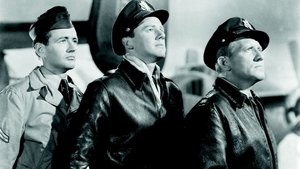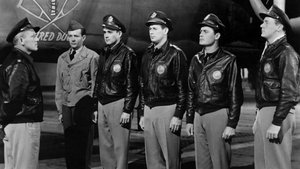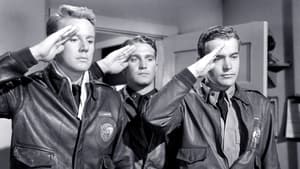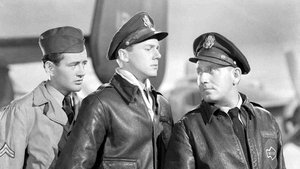Video Sources 0 Views
- Watch trailer
- Thirty Seconds Over Tokyo 1944 Colorized

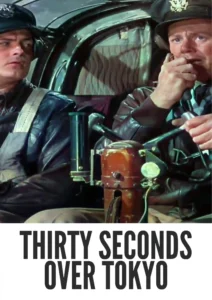
Synopsis
Table of Contents
Toggle
Step back in time to witness one of the most daring missions of World War II with Thirty Seconds Over Tokyo, a gripping war drama from 1944, now beautifully colorized to bring history to life. Starring Spencer Tracy and Van Johnson, this film recounts the incredible true story of the Doolittle Raid, a pivotal moment that boosted American morale in the early days of the war. Directed by Mervyn LeRoy, this film combines heart-pounding action with a deeply human story of courage and sacrifice. Perfect for history buffs and fans of classic cinema, this HD download offers a visually stunning and emotionally resonant experience.
Thirty Seconds Over Tokyo tells the story of the Doolittle Raid, a daring air raid on the Japanese capital in April 1942, just months after the attack on Pearl Harbor. The film follows the brave men of the U.S. Army Air Forces, led by Lieutenant Colonel James Doolittle (Spencer Tracy), as they train for a seemingly impossible mission: to launch B-25 bombers from an aircraft carrier and strike targets in Japan.The film chronicles every stage of the mission, from the rigorous training and meticulous planning to the harrowing flight over the Pacific and the intense bombing runs over Tokyo. We see the courage and determination of the airmen as they face immense challenges and overcome seemingly insurmountable obstacles. The film also highlights the personal stories of the crew members, showcasing their fears, hopes, and sacrifices.As the bombers reach their targets, the raid unfolds with dramatic intensity. After the bombing, the crews face further perils as they attempt to reach safety in China, navigating through enemy territory and battling exhaustion and the elements. Thirty Seconds Over Tokyo captures the bravery and resilience of these American heroes, reminding us of the pivotal role they played in turning the tide of World War II. The film, also known as Thirty Seconds Over Tokyo, April 18, 1942, is a tribute to the indomitable spirit of those who risked everything for their country.
Thirty Seconds Over Tokyo boasts a stellar cast who bring this historical drama to life:
- Spencer Tracy as Lieutenant Colonel James Doolittle
- Van Johnson as Ted Lawson
- Robert Walker as David Thatcher
- Tim Murdock as Dean Davenport
- Scott McKay as Captain York
Thirty Seconds Over Tokyo falls squarely into the genre of war drama, with elements of action, adventure, and historical accuracy. It combines thrilling aerial sequences with a deeply emotional narrative, making it a compelling and unforgettable cinematic experience.
Released in 1944, Thirty Seconds Over Tokyo served as both a tribute to the Doolittle Raiders and a source of inspiration for a nation at war. The film was made during World War II and aimed to celebrate American heroism and resilience. The Doolittle Raid itself was a crucial event in the early stages of the war, boosting American morale and demonstrating that Japan was vulnerable to attack.The film’s production involved close collaboration with the U.S. military, ensuring accuracy in its portrayal of the mission and the equipment used. Thirty Seconds Over Tokyo remains a significant historical document, offering valuable insights into the events and emotions of the time.
This colorized version of Thirty Seconds Over Tokyo has been carefully restored using state-of-the-art digital techniques, enhancing the visual impact while preserving the film’s original atmosphere of tension and drama. The colorization process involved meticulous analysis of the original black and white footage, with researchers consulting historical records and expert opinions to ensure accuracy in the color palette.Advanced algorithms were used to add realistic colors to the scenes, bringing new life to the characters, aircraft, and settings. This painstaking process enhances the viewing experience for modern audiences, making the story even more engaging and accessible. The debate around colorizing classic films continues, but this version aims to honor the original while making it more appealing to contemporary viewers, ensuring the legacy of this important historical event and the film itself endures.
- : Mervyn LeRoy
- : Dalton Trumbo
- : the book by Captain Ted W. Lawson and Bob Considine
- : Harold Rosson
- : Harold F. Kress
- : Metro-Goldwyn-Mayer (MGM)
- : Loew’s, Inc.
- : 138 minutes
- : MP4
- : HD (1080p)
- : Compatible with most devices, including smartphones, tablets, computers, and smart TVs.
Thirty Seconds Over Tokyo (1944) was a critical and commercial success upon its release, praised for its accurate portrayal of the Doolittle Raid, its thrilling action sequences, and its emotional depth. The film received Academy Award nominations and remains a beloved classic of war cinema. It continues to be admired for its depiction of courage, sacrifice, and the indomitable spirit of the American people during World War II.
- : What is Thirty Seconds Over Tokyo about?
- A: Thirty Seconds Over Tokyo tells the true story of the Doolittle Raid, a daring air raid on Japan in 1942.
- : Is Thirty Seconds Over Tokyo (1944) historically accurate?
- A: The film is based on the firsthand account of one of the Doolittle Raiders and strives for historical accuracy.
- : Is this version of Thirty Seconds Over Tokyo colorized?
- A: Yes, this version has been professionally colorized to enhance the viewing experience.
- : What makes Thirty Seconds Over Tokyo a classic war film?
- A: The film combines thrilling action with a deeply human story of courage and sacrifice, making it a compelling and unforgettable cinematic experience.
- : What is the download format?
- A: The download format is MP4, which is compatible with most devices.
- : What resolution is the download?
- A: The resolution is HD (1080p), providing a high-quality viewing experience.
Watch Thirty Seconds Over Tokyo Today!
